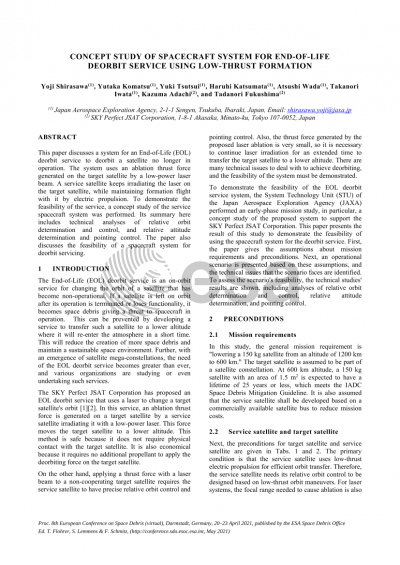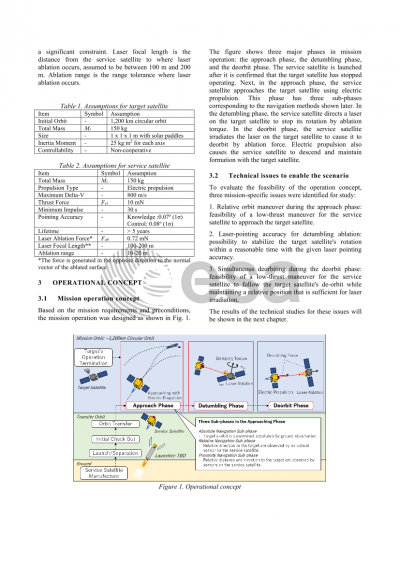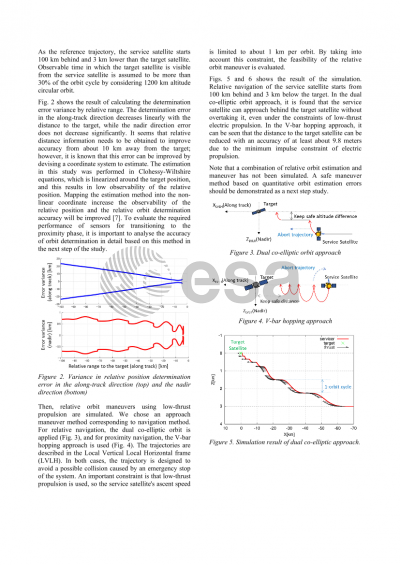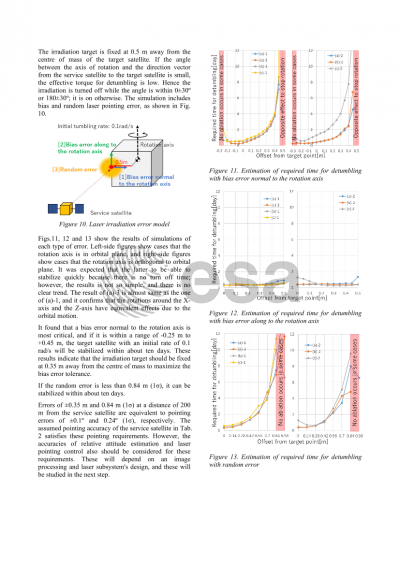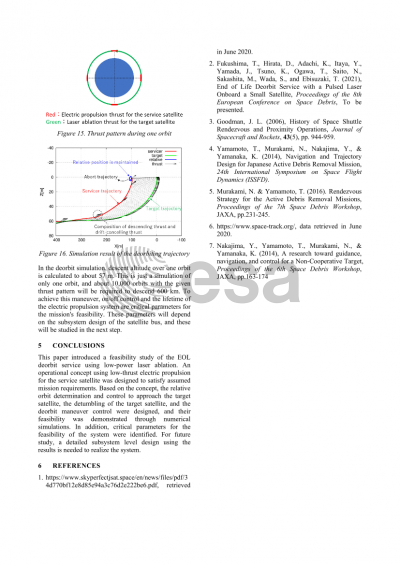Document details

Abstract
"End-of-Life service" is an on-orbit satellite service for changing orbit of the satellite that is no longer in operation. If a satellite is left on orbit after its operation is terminated due to loss of function or other reasons, it becomes space debris. Providing a service of transferring such a satellite to a lower altitude orbit where it can re-enter the atmosphere in a short time will reduce the generation of space debris and maintain a sustainable space environment.
As a method to transfer a satellite to a lower altitude, it is proposed to generate an ablation thrust force on the target satellite by irradiating a low-power laser beam from a service satellite. This method has an advantage in safety because it does not require mechanical contact with the target satellite. It is also an economical method, because it requires no additional propellant to apply the deorbiting force on the target satellite.
On the other hand, to generate the desired thrust force by irradiating a laser beam on a non-cooperating target satellite from a certain distance, the service satellite is required to have precise relative orbit control and pointing control. Furthermore, as the thrust force generated by the laser ablation is very small, it is necessary to continue laser irradiation for a long time to transfer the target satellite to a lower altitude. There are many technical issues to achieve such deorbit operation, and the feasibility of the system must be demonstrated.
In order to demonstrate the feasibility of the End-of-Life deorbit service system, we performed a concept study of the system. In this study, we assumed a mission requirement of lowering an altitude of a 150kg small satellite from the 1200km to 600 km. From an economic point of view, we assume that the service is provided by a 150 kg-class small satellite bus, and low-thrust electric propulsion is used for efficient orbit transfer of the service satellite itself. Based on these assumptions, we designed an operational scenario and studied solutions enabling the scenario.
For the major operational scenario, the following three phases are examined and their solutions are shown:
1. Approaching phase: The service satellite approaches to the target satellite in order to enable laser ablation.
2. Detumbling phase: Attitude rotation of the target satellite is stabilized in order to generate desired laser ablation thrust.
3. Deorbit phase: The ablation thrust to lower the orbit altitude is generated on the target satellite by irradiating the laser from the service satellite.
In order to assess the feasibility of this scenario, we performed technical studies including the analyses of relative orbit determination and control and relative attitude determination and pointing control. This paper, the result of this concept study, demonstrating the feasibility of the spacecraft system for the deorbit service.
Preview
